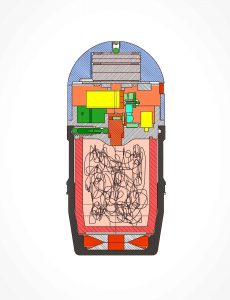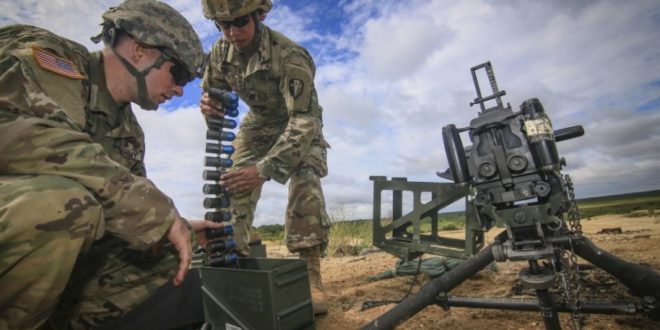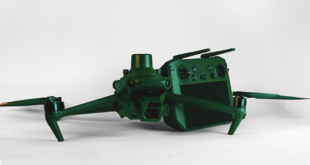There are several problems with shooting drones out of the sky. Often that level of force is going to make the problem worse, not better. For starters, a damaged or busted drone could crash land anywhere or on anyone. The uncertainty and danger grow exponentially if it’s strapped with explosives or weaponised in some other way.
For what it’s worth, blowing something up also makes it more difficult to gather forensic details that might lead you to the culprit.
All of which explains why most counter-drone developers have gone down the road of hacking, jamming, spoofing or some combination of the three.
But there remains a middle ground for kinetic methods: catching. Drones are, after all, oversized mechanized mosquitos. Get yourself a net big enough (or an eagle brave enough) and you might just be on to something.
The problem is doing that with accuracy and reliability.
British engineering firm OpenWorks has developed SkyWall, a shoulder mounted cannon that fires out a net to trap drones and bring them down. Dutch company Delft Dynamics has developed DroneCatcher, essentially a bigger drone capable of tracking, snaring and kidnapping smaller drones that are up to no good.
But both options seem fallible and a little lightweight. There’s also the issue of range. The closer a rogue drone is, the more chance both options will be successful. But sometimes you need to deal with a threat before it becomes one. There are also questions over how future-proof current methods are. How helpful will they be if swarms of weaponized drones become a method of attack?
US Army Patents Counter-drone Grenade
As you might expect, the US Army has been busy working on something altogether more hardcore: Counter-drone grenades.
The new weapon was invented by Tomasz Blyskal, Richard Fong, and LaMar Thompson of the Armament Research, Development, and Engineering Center at the Picatinny Arsenal in New Jersey – coincidentally a state which experienced drone disruption to air traffic earlier this year.
So how does it work? Well, essentially what the researchers have done is pack a net into a 40mm grenade.
Patented on Tuesday, the grenade houses a net and a proximity detector, which detonates a small charge and casts a net out six to nine meters from the target. It’s been designed to work with grenade launchers common among US. military and law enforcement units.

Illustration of U.S. Patent 10,197,365, showing the net strings under the proximity detector which detonates a small charge, springing the 40mm grenade apart and spreading the net out six to nine meters from the target. (Troy Carter/TechLink)
The patent describes the process in more detail: “As the round nears the target, a signal from a control board activates a servo. The servo pulls on a central lock plunger to release a ball mechanism. This releases the ogive section, which in turn allows the ejection spring means to eject the petals and weights along with the net stowed there within.”
Initial tests of the device have been promising. The grenade has outperformed other net-based countermeasures, partly because it doesn’t rely on a skilled pilot to guide the net and is more effective against swarms, or multiple targets.
Malek Murison is a freelance writer and editor with a passion for tech trends and innovation. He handles product reviews, major releases and keeps an eye on the enthusiast market for DroneLife.
Email Malek
Twitter:@malekmurison
Subscribe to DroneLife here.
https://dronelife.com/2019/02/08/us-army-patents-drone-snaring-grenade/
 Unmanned Aerial Vehicle The latest drone news
Unmanned Aerial Vehicle The latest drone news





